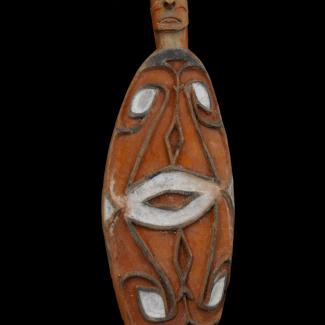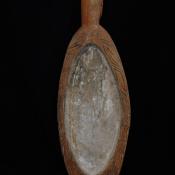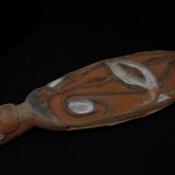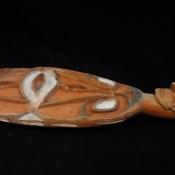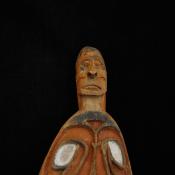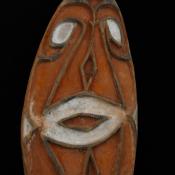This is an oblong wooden sago platter carved by the Asmat peoples of Papua New Guinea. It was likely carved in Papua New Guinea in the latter half of the twentieth century and features decorative geometric carvings on its surfaces. The main curved portion of the piece features a geometric design painted white and red, the outlines of which are painted in black. The rims of the piece were once likely painted black as well, but they have since faded over time. The handle of the platter is carved in the likeness of a male figure with bulging eyes, large nose, wide mouth, and inset ears. The top of the cranium is carved and painted black, either as a stylized depiction of hair or a headpiece. The entire head is painted red. There is one streak of white pigment across the head’s right cheek, likely not intentional.
White pigments are known as mbi, and are created by crushing and heating the shells of river mussels. Red pigments are known as wasah, and are created by mixing clays found in the river beds at upstream village communities. Paint and color are said to have magical properties and are often associated with images of power and mysticism.
Platters such as this are traditionally used to serve roasted balls of sago at everyday and ceremonial meals. They are carved in the likeness of humans to symbolize the connection that humans have with the sago tree, which gives life and brings fertility. They were also used, up until the banning of headhunting practices in the late twentieth century, for the consumption of human brains collected in raiding events. The consumption of ceremonial Capricorn beetles replaced this tradition, as their larval forms are thought to strongly resemble human brain matter.
Colors: Red, White, Brown, Black

